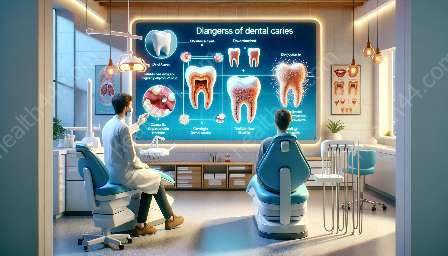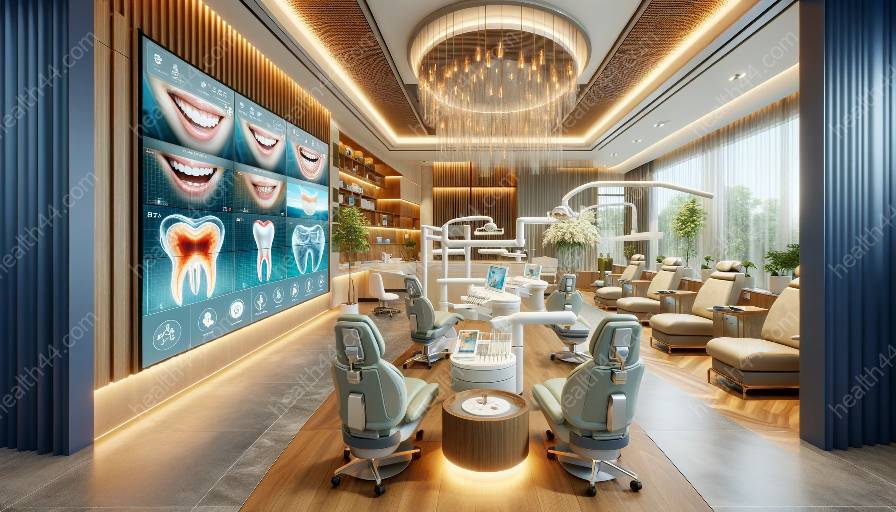Oral health disparities and inequalities persist among marginalized populations, often resulting in adverse effects of poor oral health. However, technology is now playing a crucial role in addressing these challenges and improving outcomes for underserved communities. This article explores the intersection of technology, oral health disparities, and the impact of poor oral health, and delves into innovative technological solutions that are making a difference.
Understanding Oral Health Disparities and Inequalities
Oral health disparities refer to the differences in oral health status and outcomes among various population groups. These disparities are often driven by social, economic, and environmental factors, leading to unequal access to dental care, preventative services, and oral health education.
Marginalized populations, including low-income individuals, racial and ethnic minorities, individuals with disabilities, and rural communities, are particularly vulnerable to oral health disparities. Limited access to oral healthcare services, lack of insurance coverage, and cultural barriers further exacerbate these disparities, resulting in higher rates of untreated dental issues and poorer oral health outcomes.
The Effects of Poor Oral Health
Poor oral health can have far-reaching consequences, affecting overall well-being and quality of life. From chronic pain, difficulties in eating and speaking, to decreased self-esteem and social interactions, the impact of poor oral health is significant. Furthermore, untreated dental problems can lead to more severe conditions, such as oral infections, periodontal disease, and even systemic health issues like diabetes and heart disease.
Addressing oral health disparities and mitigating the effects of poor oral health require comprehensive strategies that leverage innovative approaches and technologies to reach marginalized populations. Technological advancements in oral healthcare have the potential to bridge gaps in access, improve care delivery, and empower individuals to take charge of their oral health.
Role of Technology in Improving Oral Health Outcomes
Technology has introduced several groundbreaking solutions to enhance oral health outcomes in marginalized communities:
- Telehealth and Teledentistry: Telehealth platforms and teledentistry services connect individuals with oral healthcare providers remotely, breaking down geographical barriers and expanding access to dental consultations, screenings, and follow-ups. This approach is particularly beneficial for individuals in rural or underserved areas who may face transportation and appointment scheduling challenges.
- Mobility and Accessibility: Mobile dental clinics and portable dental equipment enable oral healthcare professionals to deliver services directly to communities in need, reaching individuals who may otherwise struggle to access traditional dental facilities. These mobile units offer essential preventive care, dental cleanings, and screenings, addressing the immediate oral health needs of marginalized populations.
- Digital Health Tools: Smartphone applications, wearable devices, and online platforms provide educational resources, interactive oral health monitoring, and personalized care recommendations. These digital tools empower individuals to manage their oral health, track their progress, and stay informed about proper oral hygiene practices, ultimately promoting better oral health outcomes.
- 3D Printing and Customization: 3D printing technology allows for the creation of customized dental prosthetics, such as crowns, bridges, and dentures, tailored to the specific needs of patients. This innovative approach ensures a better fit, improved comfort, and increased durability, especially for individuals with unique oral healthcare requirements.
Impact and Future Directions
The integration of technology into oral healthcare has the potential to revolutionize how marginalized populations access and receive dental services, ultimately reducing oral health disparities and improving overall outcomes. By leveraging these technological advancements, stakeholders can work towards creating more inclusive, patient-centric oral healthcare systems that prioritize preventive care and early intervention.
Furthermore, ongoing research and development in the field of digital health and oral healthcare technologies are paving the way for even more sophisticated solutions tailored to the needs of underserved populations. From artificial intelligence-driven diagnostics to virtual reality-based patient education, the future holds promise for continued innovation and progress in addressing oral health disparities through technology.
Conclusion
Technology is proving to be a powerful ally in the fight against oral health disparities and the effects of poor oral health in marginalized populations. By embracing innovative solutions and leveraging the potential of digital health, the oral healthcare landscape is evolving to be more accessible, personalized, and impactful for underserved communities. As technology continues to advance, the potential to create lasting improvements in oral health outcomes for all individuals, regardless of background or circumstance, becomes increasingly achievable.



